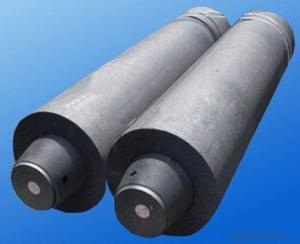When we talk about the green energy revolution, it’s not just about solar panels and wind turbines. It’s a whole new way of thinking about energy production, storage, and use. And one of the unsung heroes in this revolution is the graphite electrode. You might not have heard of it, but it’s playing a crucial role in making our energy cleaner and more sustainable.
Let’s dive into the world of graphite electrodes and see why they matter so much. First off, what are graphite electrodes? They’re essentially long, thin rods made of graphite, a form of carbon. They’re used in a process called electric arc furnace (EAF) steelmaking, which is a key part of the green energy equation.
Now, you might be wondering why steelmaking is relevant to green energy. Well, steel is a fundamental material in modern society. We use it to build everything from cars to bridges to skyscrapers. And the way we make steel has a huge impact on the environment. Traditional steelmaking methods, which involve mining and smelting iron ore, are energy-intensive and produce a lot of greenhouse gases.
Enter the electric arc furnace. This is where the graphite electrodes come in. The EAF process uses scrap metal as its main raw material, which is melted down using the intense heat generated by the graphite electrodes. This is a much more energy-efficient and environmentally friendly way of making steel. And the best part? It can recycle almost any kind of metal, from old cars to used appliances.
But it’s not just about steelmaking. Graphite electrodes are also used in other green energy technologies. For example, they’re used in the production of lithium-ion batteries, which are the workhorses of the electric vehicle (EV) industry. These batteries are essential for making EVs more efficient and longer-lasting, and the demand for them is skyrocketing as more and more people switch to electric cars.
Moreover, graphite electrodes are used in the manufacturing of hydrogen fuel cells, which are another key component of the green energy transition. Hydrogen fuel cells convert hydrogen into electricity, emitting only water as a byproduct. This is a clean and efficient way of generating power, and it’s gaining traction in various sectors, from transportation to energy storage.
So, why are graphite electrodes so special? It’s all about their properties. Graphite is an excellent conductor of electricity, which makes it perfect for use in high-temperature, high-current applications like EAFs and fuel cells. It’s also chemically stable, meaning it doesn’t react with other materials easily, and it has a high melting point, so it can withstand the intense heat of industrial processes.
However, the production of graphite electrodes is not without its challenges. The main raw material, needle coke, is derived from petroleum and is subject to market fluctuations. This can make the cost of graphite electrodes volatile, which is a concern for manufacturers and end-users alike.
Despite these challenges, the demand for graphite electrodes is on the rise. As the world moves towards a more sustainable future, the need for clean, efficient energy technologies is only going to grow. And graphite electrodes are poised to play a pivotal role in this transition.
In conclusion, while the graphite electrode might not be the most glamorous part of the green energy revolution, it’s an essential one. Its versatility and unique properties make it a key component in various clean energy technologies. So, the next time you drive an electric car or walk past a wind turbine, remember the humble graphite electrode – it’s been working behind the scenes to make your life a little greener.

